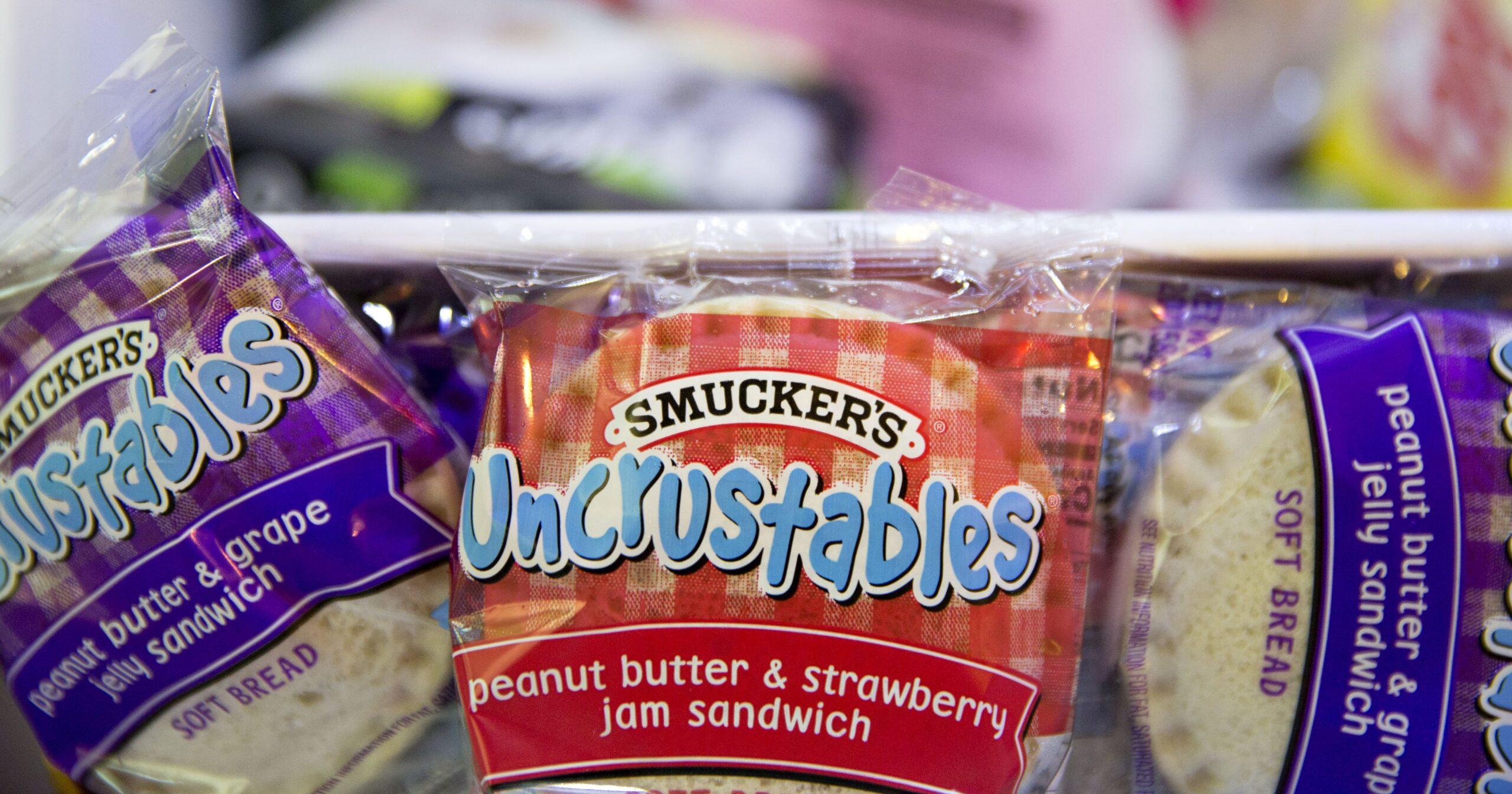
For peanut butter and jelly sandwich snobs like myself, there’s only one way to make a decent PB&J: whole wheat bread, peanut butter and jelly on both sides, with the sandwich cut in half. But it seems the NFL has another preference. According to recent data from The Athletic, the league goes through 80,000 Uncrustables a year.
That number is, frankly, staggering, and means that the average team goes through 3,600 to 4,300 Uncrustables a week. Considering the high nutritional demands professional football players are under, the NFL’s love for the snack — also popular amongst the elementary school set — made us wonder if the league knows something we don’t. Are the sealed, crustless sandwiches healthier than we realized? Should we be increasing our Uncrustables consumption? We asked an RD to weigh in.
Experts Featured in This Article:
Kelly Jones, MS, RD, CSSD, is a board-certified sports dietitian for pro athletes and active families.
Are Uncrustables Healthy?
It depends. “Some foods and products that can be considered helpful and nutritious for one person may not be as healthy for another,” Kelly Jones, a board-certified sports dietitian, tells PS. When it comes to athletes and highly active kids, a peanut butter and jelly sandwich is a common recommendation for a pre-practice, pre-competition, or anytime snack, Jones says. We dig into exactly why below, but in short: the classic sandwich contains a mix of easily digested carbs, protein, fat, and fiber that gives people a quick energy boost that tapers off slowly rather than falling off a cliff (great for before exercise). After a workout, they can help you refuel and quell hunger.
Even if you’re not very active, peanut butter and jelly sandwiches can still be a delicious and nostalgic snack that’s worth enjoying in moderation. But people with health conditions like diabetes may be recommended to minimize their intake of foods like jelly or jam, which can lead to blood sugar spikes, Jones notes.
What Nutritional Benefits Do Uncrustables Offer?
When comparing a PB&J that you could make on your own with a standard loaf of sandwich bread to Uncrustables, there won’t be many differences in ingredients, Jones says. You’ll also see similar nutrition profiles for calories, carbohydrate, fat and protein if your homemade PB&J was the same size, or weight, as an Uncrustable. For context, here’s a nutritional breakdown for a peanut butter and grape jelly Uncrustable:
- Calories: 210
- Total Fat: 9g
- Cholesterol: 0mg
- Sodum: 220mg
- Carbohydrates: 28g
- Dietary Fiber: 2g
- Sugar: 10g
- Protein: 6g
“Nutritionally, both [Uncrustables and a regular PB&J] provide carbohydrates along with some protein, fat, and fiber that when eaten anywhere from 15 minutes to an hour before exercise, can provide quick-acting and longer-lasting energy that may help maintain intensity and duration of a training session,” Jones says. The timing beforehand should be individualized and might depend on weight (adults may digest the food more quickly than kids) and daily energy expenditure and gastric emptying rates. “For example, a youth basketball player may have one an hour before a game, a high school player 30 minutes before, and an NFL player 15 or 20 minutes before activity,” Jones says. But if you’re interested in trying it out as a pre-workout snack, you may have to play around to find the right timing for you. They’re great after a workout too, but may need to be paired with a high-protein snack to really help you refuel.
That said, there is some difference in nutritional benefit depending on the Uncrustables variety. The low-sugar kind made with wheat bread offers an extra gram of fiber, 3 grams less of total sugar, and 2 less grams of added sugar. “This may be useful for someone looking to limit added sugar or who is consuming other carbohydrate sources, such as a banana, alongside their Uncrustable,” Jones says.
Is It Ever Better to Eat a Regular PB&J?
Jones, who works regularly with professional teams, says it may at times be advised for athletes to make their own PB&J. This way they can use a higher-quality bread that is more rich in protein and fiber, as well as fruit preserves versus jelly, and a natural peanut butter that doesn’t contain fully hydrogenated oils for a healthier fat profile. “This might make sense in a home locker room where there is more control over what’s available, or in a hotel room for athletes while traveling who have a bit more time,” Jones says. “This could offer 15+ grams of protein, versus the 6 grams in an Uncrustable for those who may need it.”
Should You Consider Eating Uncrustables Before or After Your Workout?
“Uncrustables and alternative crustless sandwiches on the market can be convenient for on-the-go scenarios,” Jones says. “If reaching for an Uncrustable after exercise to replenish muscle carbohydrate stores, it’s important to pair it with adequate protein.” For a 10-year old this may include a glass of milk or soymilk, or even a cheese stick. For an adult, try pairing it with a bottled ready-to-drink protein beverage, or even a couple of turkey sticks, Jones says. “Ultimately, as is the case with all packaged foods, Uncrustables are best used as a supplement to a diet based in whole foods.”
Alexis Jones (she/her) is the senior health and fitness editor at PS. In her six years of editorial experience, Alexis has developed passions and areas of expertise around mental health, women’s health and fitness, racial and ethnic disparities in healthcare, and chronic conditions. Prior to joining PS, she was the senior editor at Health magazine. Her other bylines can be found at Women’s Health, Prevention, Marie Claire, and more.
